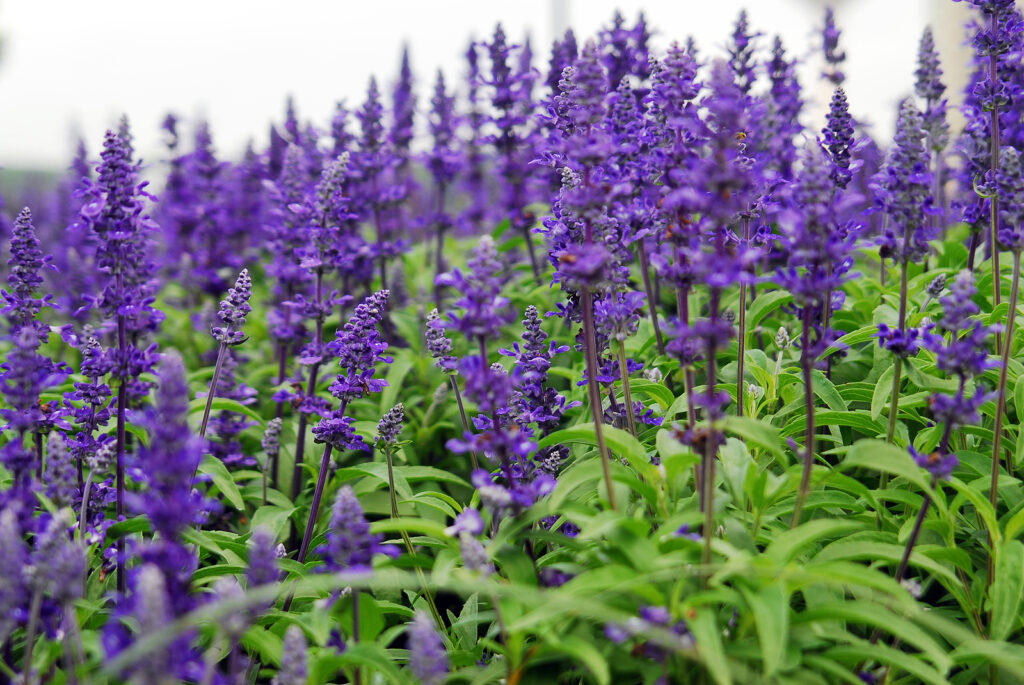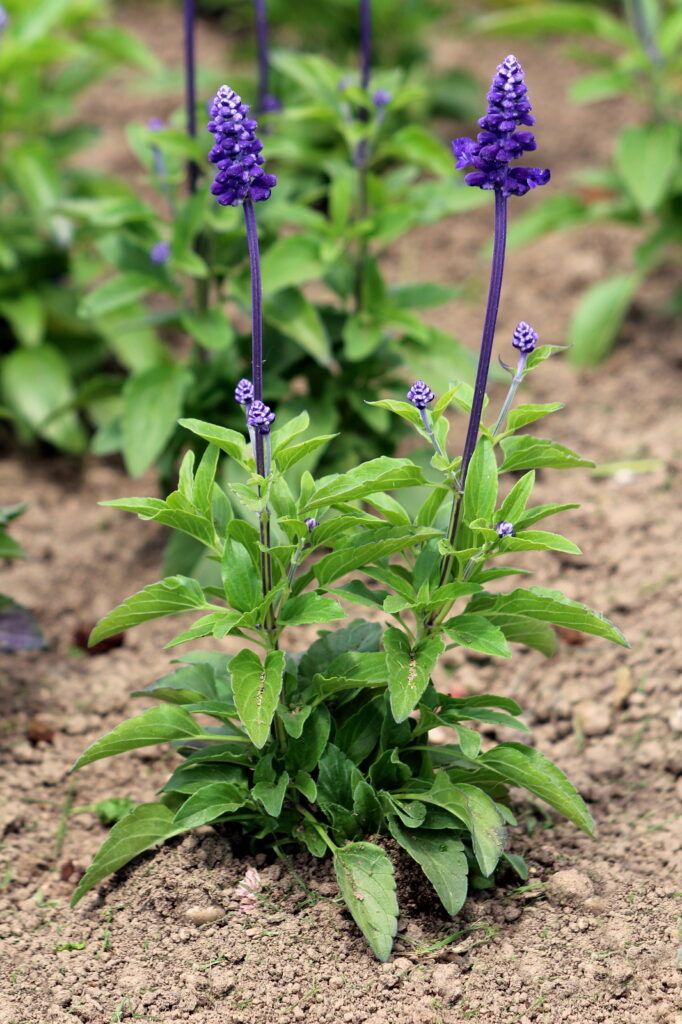Annual blue salvia, Salvia farinacea, produces spikes of small purple-blue flowers from midsummer to fall. Annual blue salvia is sometimes called mealycup sage. The plant is an upright perennial often grown as an annual. Leaves are lance-shaped.
Annual blue salvia has the best effect when planted in drifts in beds and borders. More than one plant in a container will give a true sense of the plants’ vibrant color.

Get to know annual blue salvia
- Plant type: Annual
- Growing Zones and range: Grow as an annual in Zones 2-7; grow as a perennial in Zones 8-11
- Hardiness: Annual blue salvia prefers warm weather and moderate to high humidity
- Height and width: 12 to 36 inches (30-91cm) high; 10 to 12 inches (25-30cm) wide
- Foliage: Lance-shaped leaves
- Flowers: Bright blue spikes
- Bloom time: Summer
- Uses: Bedding, containers, mixed flower borders
- Common name: Annual blue salvia, mealycup sage
- Botanical name: Salvia farinacea
- Family: Lamiaceae
Where to plant annual blue salvia
- Grow annual blue salvia in full sun in Zones 2-6; grow in light shade in hot summer areas in Zones 7-11.
- Plant blue salvia in average, well-drained soil.

When to plant annual blue salvia
- Set annual blue salvia in the garden in spring or later after all danger of frost has passed.
Planting and spacing annual blue salvia
- Space annual blue salvia plants 8 to 12 inches (20-30cm) apart.
- Sow seed 1/8 inch deep in evenly prepared soil.
How to water and feed annual blue salvia
- Annual blue salvia needs moderate moisture; keep the soil evenly moist.
- Fertilize annual blue salvia occasionally, every 4 to 6 weeks, or work in a slow-release fertilizer in spring.
Annual blue salvia care
- Mulch around annual blue salvia to conserve soil moisture.
- Annual blue salvia is prone to rust, aphids, and leafhoppers.
Annual blue salvia propagation
- Sow seeds in warm soil after all danger of frost has passed.
- Start seeds indoors 6 weeks before setting plants in the garden.
Annual blue salvia varieties to grow
There are several cultivars of annual blue salvia, Salvia farinacea; here are a few:
- ‘Blue Bedder’ grows to 12 inches high.
- ‘Rhea’ is compact with intense blue flowers.
- ‘Silver White’ bears pearl white flowers.
- ‘Strata’ has bicolored flowers.
- ‘Victoria Blue’ has rich blue flowers.
- ‘White Porcelain’ has white flowers.
Also of interest:
How to Grow Perennial Blue Salvia















